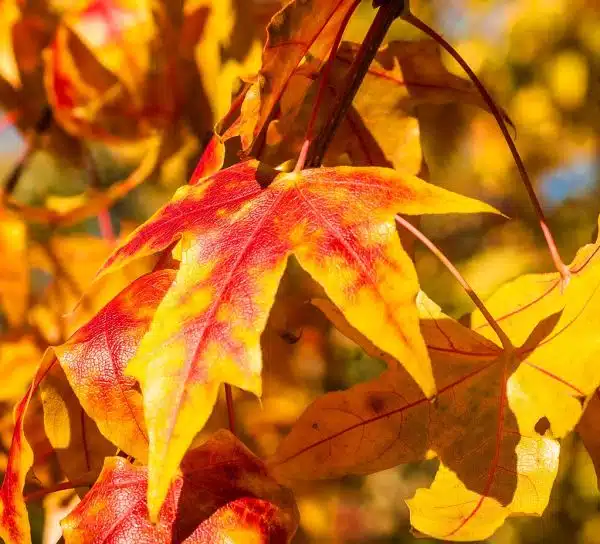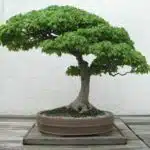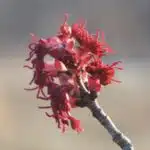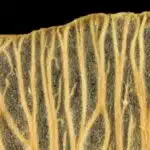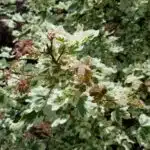Shantung maple (Acer truncatum) is a deciduous tree native to China and Korea, known for its attractive foliage and ornamental value. This maple species is often planted as an ornamental tree in landscapes due to its manageable size, easy maintenance, and tolerance to various growing conditions. It is a perfect addition to any garden or landscape that requires a touch of elegance and beauty.
Shantung maple is a hardy plant that can thrive in various soil types and climatic conditions. However, to ensure optimal growth and longevity of this tree, it is essential to provide the right care and growing conditions. In this article, we will discuss the necessary steps involved in caring for Shantung maple, including planting tips, watering requirements, fertilization needs, pruning techniques, disease prevention measures, and more. By following these simple guidelines, you can enjoy the beauty of this magnificent tree for years to come.
Characteristics Of Shantung Maple
Shantung Maple, scientifically known as Acer truncatum, is a deciduous tree that belongs to the Sapindaceae family. It is native to China and is popularly grown for its ornamental value. Shantung Maple has an attractive foliage display with leaves that are deeply lobed and have serrated edges. The leaf color ranges from dark green to dark purple in the summer and turns reddish-orange in the fall.
The growth rate of this maple tree is moderate to fast, reaching a height of 20-30 feet and a spread of 15-25 feet at maturity. It prefers well-drained soil that is moderately moist and can tolerate both full sun and partial shade. This tree also requires regular watering during dry spells in summer.
One notable characteristic of Shantung Maple is its adaptability to various growing conditions. It can thrive in urban environments, making it an excellent choice for landscaping projects in residential areas or public spaces. With proper care, this hardy tree can live up to 50 years or more, providing shade and beauty for generations to come.
Transitioning into the next section about selecting the right planting location, it’s crucial to consider certain factors such as soil type, drainage, sunlight exposure, and space requirements before planting your Shantung Maple tree. By following these guidelines, you can ensure optimal growth and health for your tree while enhancing the aesthetic appeal of your landscape design.
Selecting The Right Planting Location
When selecting the right planting location for a shantung maple (Acer truncatum), one of the most important factors to consider is the amount of sun exposure the plant will receive. The plant prefers full sun exposure, with 6 to 8 hours of direct sunlight per day being ideal. Additionally, the soil type should be well-draining and rich in organic matter, as the shantung maple is not tolerant of waterlogging. Lastly, the soil pH should be slightly acidic, ranging from 6.0 to 6.5.
Sun Exposure
The shantung maple (Acer truncatum) is a deciduous tree that requires ample sunlight to thrive. For the best orientation, plant the shantung maple in a location that receives full sun exposure. This will ensure optimal growth and development of the tree’s foliage and overall structure.
However, if you live in an area with hot summers or harsh afternoon sun, it’s crucial to provide some shade for your shantung maple. Shady spots can help protect the tree from heat stress and sunburn, which are common problems for this species. Consider planting your shantung maple near taller trees or buildings that can provide some shade during the hottest parts of the day.
When selecting a planting location for your shantung maple, keep in mind that proper sun exposure is essential for its health and longevity. By choosing a site with full sun exposure and providing some shade when necessary, you can ensure that your shantung maple thrives for years to come.
Soil Type
Selecting the right planting location for your shantung maple involves more than just considering its sun exposure needs. Equally important is the soil type in which it will be planted. Soil serves as the foundation for any plant’s growth and development, and getting it right for your shantung maple can make all the difference in its health and longevity.
The ideal soil type for a shantung maple is well-draining, loamy soil that is rich in organic matter. This type of soil allows water to permeate through it easily, preventing root rot and other fungal diseases that can harm the tree’s health. Moreover, loamy soil that is high in organic matter provides essential nutrients to the tree, reducing the need to fertilize it regularly. When planting your shantung maple, ensure that you provide adequate space around its roots to promote proper drainage.
In addition to soil type, pH levels are also crucial when selecting a planting location for your shantung maple. The best pH range for this species is between 6.0 and 7.5. Soil with a pH level outside this range may prevent nutrient uptake by the tree’s roots or lead to other issues such as chlorosis or stunted growth. You can adjust soil pH levels by adding lime or sulfur-based products, depending on whether you need to raise or lower them respectively. Regular testing of your soil’s pH levels will help you maintain optimal conditions for your shantung maple’s growth and health.
Preparing The Soil For Planting
Soil preparation is an essential step in growing healthy shantung maples. The first step involves testing the soil to determine its nutrient content and pH level. It is strongly recommended to amend the soil if it is lacking in essential nutrients such as nitrogen, phosphorus, and potassium. A well-amended soil also helps with water retention and drainage, which are crucial for the tree’s growth.
Mulching is another important aspect of preparing the soil for planting shantung maples. Mulch helps regulate soil temperature, conserve moisture, and suppress weed growth. Organic materials like shredded leaves or bark chips make excellent mulch options as they break down over time and add vital nutrients back into the soil.
Weed control is crucial during the early stages of a shantung maple’s life. Weeds compete with young trees for vital nutrients, water, and sunlight, hindering their growth potential. Hand-pulling weeds or using a hoe are effective methods of weed control. However, be careful not to damage the roots of your shantung maple when removing weeds.
With proper soil preparation techniques like amending and testing the soil, adding mulch for moisture conservation and temperature regulation, and controlling weeds that can hinder growth potential – you will set up your shantung maple tree for success. In our next section on planting techniques for shantung maple trees, we will explore how to plant them properly to maximize their growth potential.
Planting Techniques For Shantung Maple
Shantung maple is a beautiful tree that can bring an exceptional charm to any garden or landscape. This deciduous tree is native to China and is known for its brilliant fall foliage color. According to recent studies, the Shantung maple can grow up to 25 feet tall and 20 feet wide in ideal conditions, making it an excellent choice for large landscapes or as a stand-alone specimen plant.
Planting techniques play a crucial role in ensuring the healthy growth of Shantung maple. Before planting, ensure that the site has well-draining soil with a pH range of 6-7.5. It’s important to prepare the planting hole by removing any weeds or debris and mixing in organic matter. When choosing companion plants, consider those that can tolerate partial shade and complement the Shantung maple’s characteristics. Mulching techniques are also essential in maintaining soil moisture and preventing weed growth around the tree.
Incorporating proper watering techniques is vital for establishing young trees and promoting overall health. Water newly-planted trees regularly during their first growing season, ensuring adequate moisture but avoiding waterlogging. As they mature, Shantung maples require deep watering once per week during dry periods, allowing water to penetrate at least six inches deep into the soil. Understanding these planting techniques will enable you to achieve optimal growth while enjoying the stunning beauty of your Shantung maple tree for many years to come.
Watering Requirements
Acer truncatum, commonly known as shantung maple, is a relatively easy tree to grow and care for. One of the most important aspects of caring for this tree is providing it with adequate water. Watering frequency will vary depending on factors such as climate, soil type, and tree age. Generally speaking, newly planted shantung maples require more frequent watering than established trees.
The key to watering shantung maples is maintaining consistent soil moisture levels. The goal is to keep the soil moist but not waterlogged. Overwatering can lead to root rot and other issues, while under-watering can stress the tree and cause leaf drop or other problems. When watering, it’s best to provide a deep soak rather than a light sprinkle. This encourages deeper root growth and helps the tree become more drought-tolerant over time.
To determine when your shantung maple needs watering, you can check soil moisture levels using a probe or by digging down a few inches into the soil with a trowel or spade. If the top inch or two of soil feels dry to the touch, it’s time to water again. However, be sure to also consider factors like rainfall amounts and temperature when deciding how frequently to water your tree. By paying attention to your shantung maple’s watering needs and providing it with appropriate moisture levels throughout the growing season, you can help ensure that it stays healthy and vigorous.
Maintaining proper soil moisture levels is just one aspect of caring for your shantung maple. In addition to regular watering, these trees also require regular fertilization in order to thrive. In the next section, we’ll take a closer look at fertilization needs for shantung maples and discuss some tips for keeping them healthy and strong throughout their lifespan.
Fertilization Needs
Proper fertilization is crucial in maintaining a healthy shantung maple. Fertilizer application should be done during the growing season, which is typically from spring to fall. The amount and frequency of fertilizer application may vary depending on the age and health of the tree, as well as soil conditions.
To determine the appropriate fertilizer for your shantung maple, it is important to conduct a soil test. A soil test can reveal nutrient deficiencies that may affect the growth and development of the tree. Nitrogen, phosphorus, and potassium are essential nutrients that should be present in sufficient quantities in the soil. If any deficiencies are detected, a targeted fertilizer can be applied to address those specific needs.
While fertilization is important for promoting growth and vitality in your shantung maple, it is also important not to over-fertilize. Over-fertilization can lead to excessive growth, weak branches, and susceptibility to disease or pests. Always follow manufacturer instructions when applying fertilizer and avoid applying more than recommended.
- Consider using slow-release fertilizers for longer-lasting results
- Apply fertilizer evenly around the base of the tree
- Water thoroughly after fertilizing
- Avoid fertilizing during drought conditions
- Use organic fertilizers for a more sustainable approach
Proper fertilization can ensure optimal growth and health of your shantung maple. By identifying potential nutrient deficiencies through a soil test and following proper application techniques, you can help your tree thrive for years to come.
As with any plant care regimen, pruning techniques are also vital for maintaining the health and appearance of your shantung maple.
Pruning Techniques
Pruning Techniques:
Pruning is an essential task in maintaining the health and appearance of a shantung maple tree. It involves removing dead, diseased, or damaged branches and shaping the tree’s growth to improve its structure. Proper pruning techniques help promote healthy growth, prevent disease, and increase yield.
Thinning cuts are the most common type of pruning cut used on shantung maples. These cuts remove entire branches back to the trunk or main branch. They help reduce the weight and density of the tree’s foliage while promoting light penetration and air circulation through the canopy. Thinning cuts should be made at a slight angle just outside the branch collar, which is where new growth will occur.
Rejuvenation pruning is another technique that can be used to restore an older or overgrown shantung maple tree. This technique involves cutting back one-third of the tree’s oldest branches each year for three consecutive years until all old wood has been removed. Rejuvenation pruning stimulates new growth, improves structure, and prolongs the life of the tree.
| Pruning Technique | Best Time to Prune | Purpose |
|---|---|---|
| Thinning Cuts | Late Winter / Early Spring | Reduce weight/density; Promote light/air flow |
| Rejuvenation Pruning | Late Winter / Early Spring | Stimulate new growth; Improve structure; Prolong life |
By using proper pruning techniques on your shantung maple tree, you can maintain its health, beauty, and productivity for many years to come. In our next section, we will discuss how to prevent and treat diseases that may affect your shantung maple tree.
Preventing And Treating Diseases
A shantung maple tree is typically a low-maintenance plant. However, it can still be prone to certain diseases. Common diseases that may affect the shantung maple include leaf spot, anthracnose, and verticillium wilt. Leaf spot is characterized by brown or black spots on the leaves, while anthracnose causes leaves to curl and turn brown. Verticillium wilt causes yellowing of the leaves and can eventually lead to death.
Preventing these diseases involves proper care and maintenance of the tree. Providing adequate water and fertilizer will help keep the tree healthy and resistant to disease. Regular pruning can also help prevent infections from spreading throughout the tree. If the disease has already affected the tree, it’s important to remove any infected branches or leaves immediately to prevent further spread.
In addition to diseases, pests can also pose a threat to shantung maples. Common pests that may affect this tree include aphids, scale insects, and spider mites. These pests can cause damage to the leaves and eventually weaken the entire plant. Pest management involves using natural methods such as insecticidal soap or neem oil rather than harsh chemicals that may harm beneficial insects as well as harmful ones. Proper sanitation practices such as removing dead plant material can also help prevent pest infestations.
Moving forward with winter care for your shantung maple requires some key steps in order to maintain its health through colder temperatures.
Winter Care
Diseases can quickly damage or kill your shantung maple if not tackled early. To prevent diseases, keep the plant’s leaves and branches dry by watering only at the base and avoiding overhead irrigation. Also, prune regularly to remove infected branches and leaves. Watch out for signs of fungal infections such as wilting or yellowing leaves, powdery mildew, or black spots on leaves. In case of an infection, treat with a fungicide according to the package instructions.
Winter is a time of dormancy for trees, including the shantung maple. During this time, your focus should be on protecting its roots from winter frost and providing adequate water without overwatering it. Covering the ground around its roots with mulch will help regulate soil temperature while protecting them from extreme cold temperatures that can damage or kill them. Water only when necessary during winter months as overwatering can lead to root rot.
To ensure that your shantung maple thrives in winter, it needs regular watering even though it may seem dormant. Winter watering should take place whenever there is a prolonged dry spell or when temperatures rise above freezing during the day. Be sure to water at the base of the plant slowly to allow water to penetrate deep into the soil where roots are located. This will help keep your tree healthy and vibrant come springtime.
Now that you know how best to protect your shantung maple in winter, it’s time to enjoy its beauty all year round! With proper care and maintenance throughout the year, you’ll be rewarded with stunning autumn colors and lush foliage in spring and summer months. Remember always to monitor for any signs of disease or pests so that you can nip them in the bud before they cause significant damage to your beloved tree.
Enjoying The Beauty Of Shantung Maple
The beauty of the Shantung Maple is something that cannot be denied. From its stunning foliage to its unique bark, this tree is a true work of art. As a horticulture expert, I have seen firsthand the impact that these trees can have on a landscape. If you are looking to incorporate a Shantung Maple into your yard, there are many landscaping ideas that can help you make the most of its natural beauty.
One great way to showcase your Shantung Maple is with photography. These trees look stunning in photos and can be used as focal points or background elements for a variety of shots. To capture the best possible images, consider using different angles and lighting techniques. You may also want to experiment with different lenses or filters to add depth and dimension to your photos.
When it comes to landscaping ideas for your Shantung Maple, there are many options available depending on your personal taste and style. You could plant other trees or shrubs around it for contrast or install decorative elements like fountains or sculptures nearby. Another option is to use the tree as part of a larger garden design, incorporating flowers and other plants that complement its color and texture.
Overall, if you are lucky enough to have a Shantung Maple in your yard, there are many ways to enjoy its beauty. Whether you choose to take photographs of it or incorporate it into your landscaping design, this tree is sure to bring joy and inspiration for years to come.
Conclusion
Shantung Maple, scientifically known as Acer truncatum, is a stunning ornamental tree that can add beauty and elegance to any landscape. This deciduous tree boasts distinct features such as dark green foliage that turns to a gorgeous reddish-orange in the fall. It has a moderate growth rate and reaches up to 25 feet tall with an equal spread. To ensure optimal growth and health of Shantung Maple, it is essential to provide adequate care and maintenance.
When selecting the planting location for Shantung Maple, it’s crucial to choose an area with well-draining soil and full sun. The soil should be nutrient-rich, loamy, acidic, and moist but not waterlogged. Proper planting techniques include digging the hole twice as wide as the root ball, adding compost or organic matter to enrich the soil, placing the plant in the hole at ground level, backfilling with soil, and watering deeply.
To maintain healthy growth of Shantung Maple, regular watering is essential throughout its lifespan. The tree requires deep watering once or twice a week during dry spells or droughts. Pruning techniques vary depending on whether you want a single stem or multi-stemmed form for your Shantung Maple tree. Preventing diseases requires proper sanitation practices such as removing dead or diseased branches promptly.
In conclusion, Shantung Maple is an excellent choice for homeowners looking to add aesthetic value and color to their landscape design. With proper care and maintenance techniques like adequate watering requirements, pruning techniques, disease prevention measures, this beautiful tree can thrive throughout its life expectancy of up to 80 years. As poet John Keats once said: “A thing of beauty is a joy forever,” and surely this statement rings true when it comes to the majestic Shantung Maple tree adding unparalleled beauty in your garden space!
Image Credits
- “Shantung Maple at it’s peak of color” by Sharon in Llano (featured)

